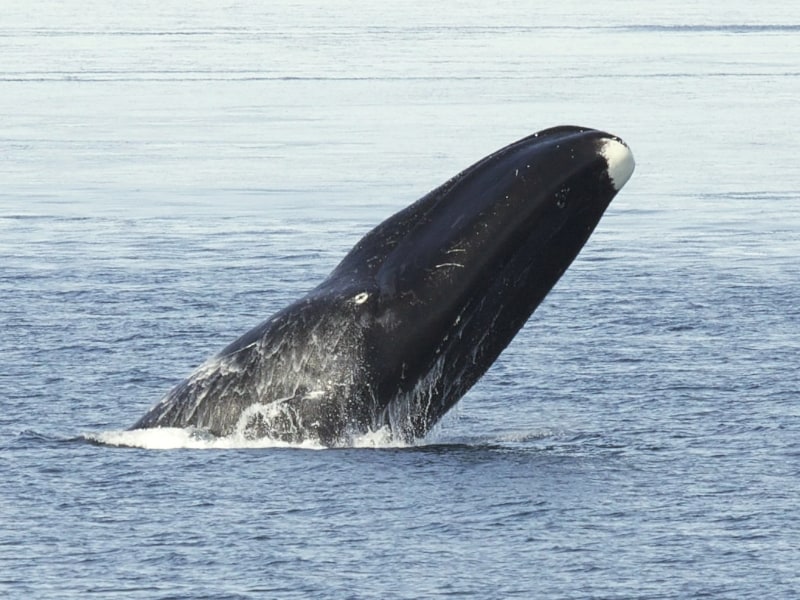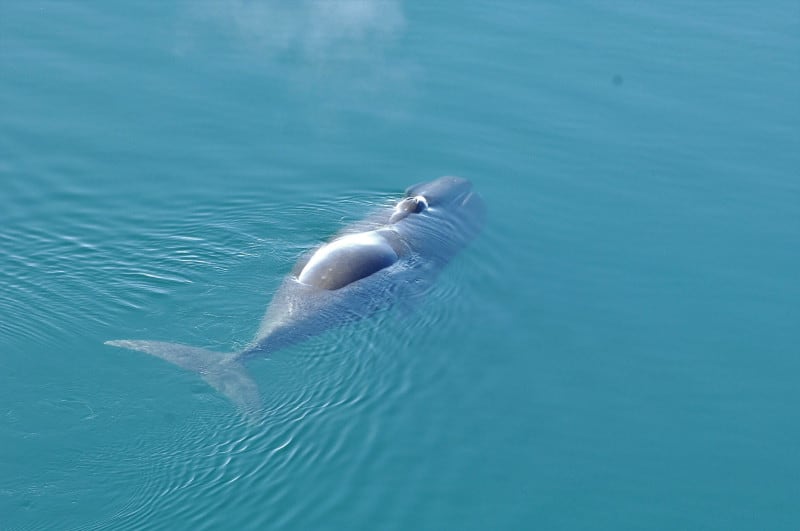Bowhead Whale Facts
- Science considers the majestic Bowhead Whale to be a species of baleen whale. This ocean dweller once served as an early target of whaling practices. Sadly, they also formed a very common target.
- Even though this species was hunted to the brink of extinction, they have fortunately proven to be the “exception to the rule.” Since the whaling moratorium in 1966, their numbers have rebounded.
- Due to this most welcome increase in numbers, the species now holds a “Least Concern” status by the IUCN. Since the moratorium, limited “subsistence hunting” by Native Alaskans has been permitted.
- The most noteworthy fact about this creature remains their apparent lack of migration patterns. This makes them the only known species of baleen whale to spend its entire life within one area.
Related Articles
Bowhead Whale Physical Description
The Bowhead Whale ranks among the largest known baleen whales. They grow to an average length of approximately 59 ft (18 m).
In fact, this whale displays moderate sexual dimorphism, with females being larger than males. In addition, the bodies grow thick in construction. As a result, individuals may weigh as much as 220,000 lb (100,000 kg).
This species possesses a mottled coloring, combining dark and light patches. Their most noteworthy feature, however, continues to be their head which we know to be the largest head of any known creature, relative to body size. It comprises approximately one-third of their overall body length. It’s also somewhat triangular in shape and they use it to break through the ice.
Another distinctive trait is that the animals possess the thickest blubber of any known species.
Also, they have the longest baleen of any known cetacean.
- Kingdom: Animalia
- Phylum: Chordata
- Class: Mammalia
- Order: Cetacea
- Family: Balaenidae
- Genus: Balaena
- Species: B. mysticetus
Bowhead Whale Distribution, Habitat, and Ecology
The Bowhead Whale inhabits a range restricted to the arctic and sub-arctic waters. They do move across the entire range but do not migrate as such.
Their motions seem to be determined by climate change and the movements of ice.
They do not seem to be deep divers, and rarely dive more than 500 ft (152 m).
The Bowhead Whale does not appear to be an especially social species. They typically travel alone or in groups of no more than six individuals.
Since they feed as filter feeders, they swim with their mouths open wide and feed on zooplankton, including copepods, amphipods, and other small crustaceans. Each individual consumes an average of 3,600 lb (1,633 kg) per day.
Females reproduce every 3-4 years on the average. The Bowhead Whale still represents one of the longest-lived creatures on earth – an average lifespan is approximately 200 years.
Species Sharing Its Range
Check out our articles on 5 Magnificent Reptiles of Mexico, Clouded Leopard, Waw an Namus, Jumping Cholla, Autumn Meadowhawk, Wilson’s Bird-of-paradise, Knysna Seahorse, Black Mamba


